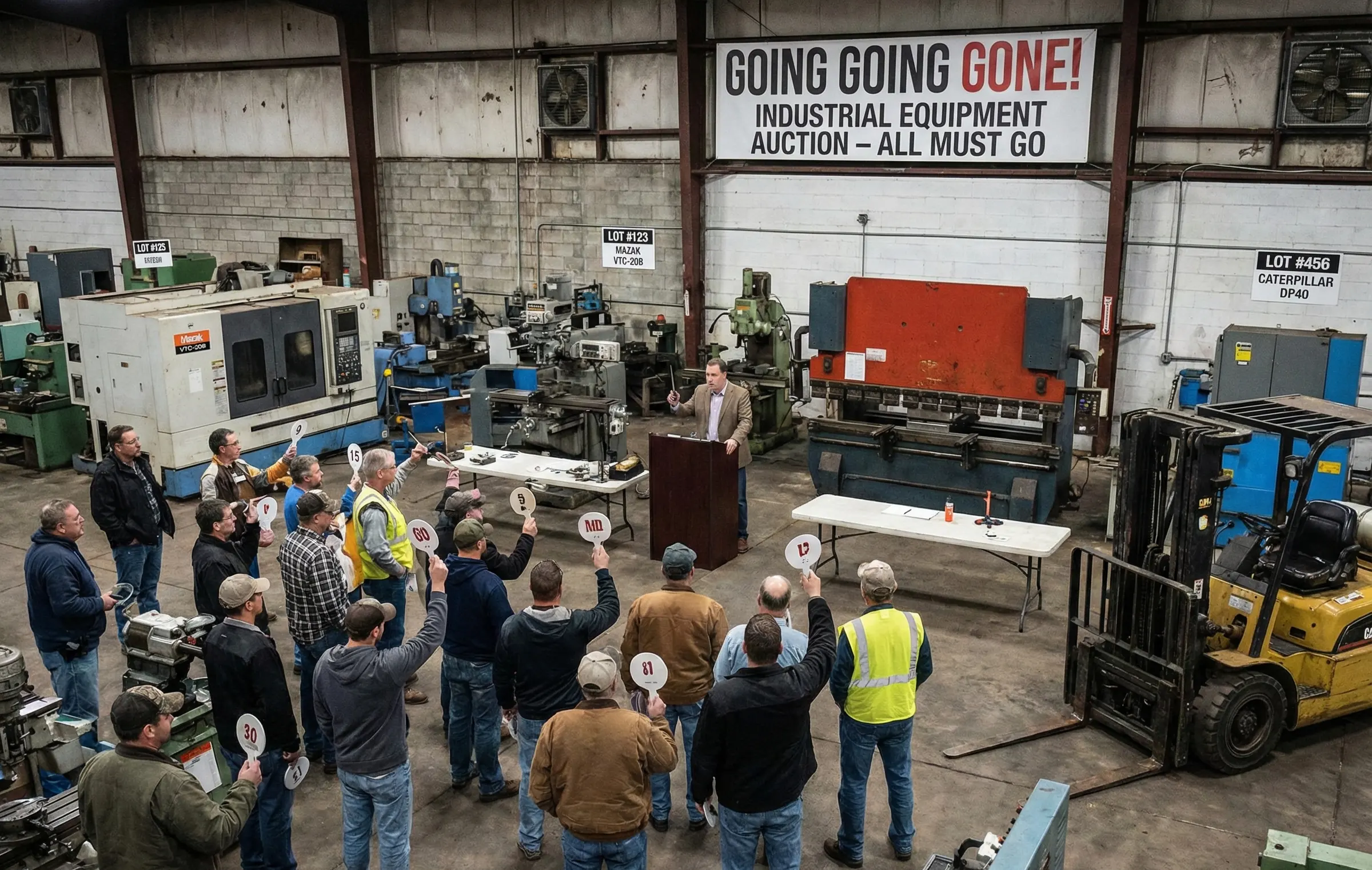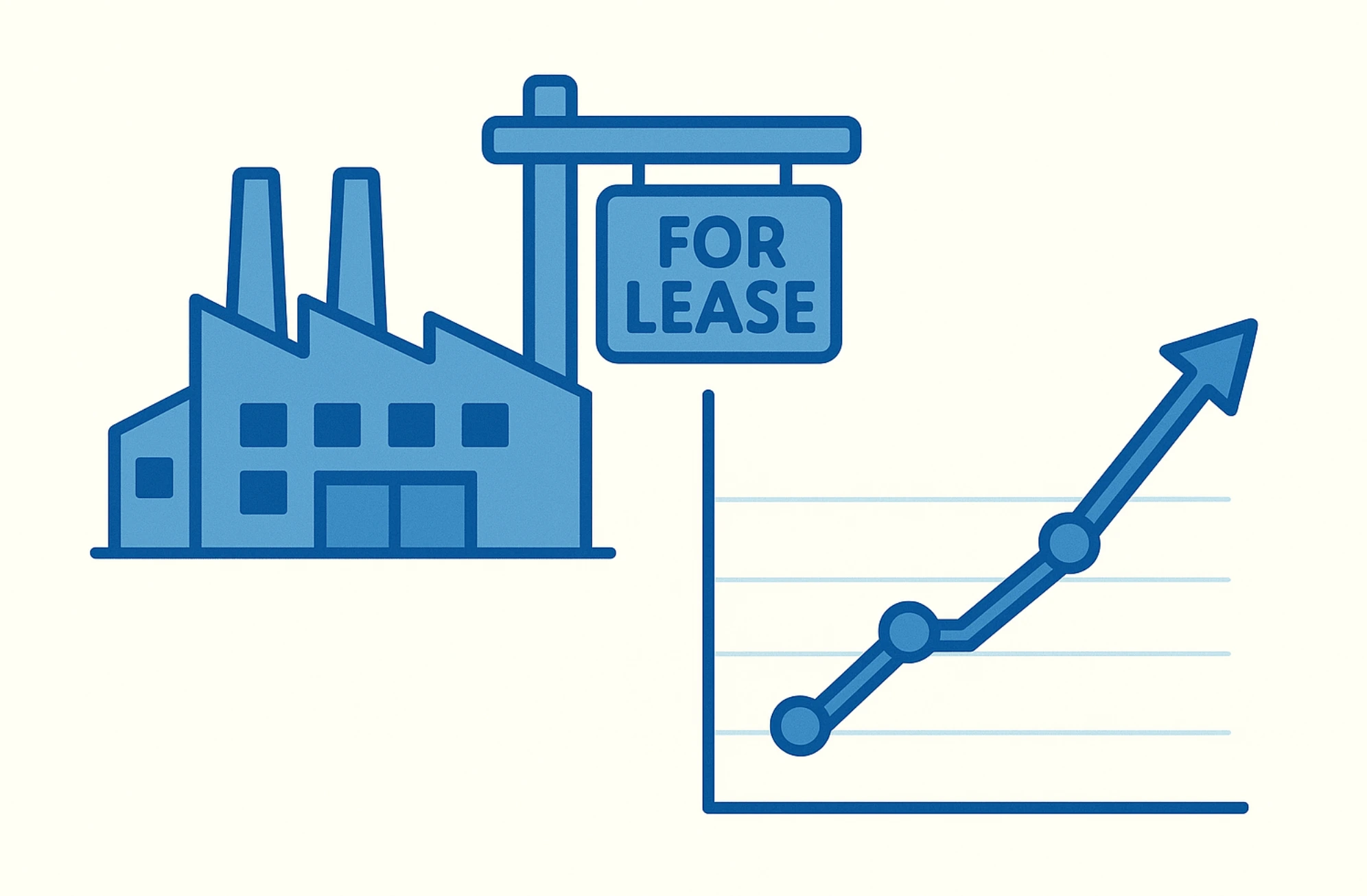For many industrial companies, dealing with surplus or outdated machinery is seen as a logistical headache—a task to be completed rather than a strategic opportunity. However, we believe this view is fundamentally flawed. Effective asset disposition is not merely about clearing floor space; it is a critical financial strategy that unlocks dormant capital, mitigates risk, and streamlines your operations for future growth. Resisting a proactive approach to asset disposition means leaving significant money on the table and allowing depreciating machinery to become a liability. A well-executed asset disposition plan, on the other hand, converts those liabilities back into valuable assets.
Asset disposition is the formal process of selling, liquidating, scrapping, or otherwise disposing of capital assets that are no longer productive or needed by a company. While this includes everything from office furniture to IT equipment, for industrial businesses, the focus is squarely on heavy machinery, manufacturing lines, and entire facilities. A strategic approach to industrial asset disposition is crucial for maintaining a healthy balance sheet and ensuring operational agility.
- Capital Recovery: Convert idle machinery into immediate cash flow to reinvest in new technology or other core business areas.
- Reduced Overhead: Eliminates costs associated with storing, insuring, and maintaining unused equipment.
- Accurate Financial Reporting: Cleans up your balance sheet by removing depreciated or "ghost" assets, providing a clearer financial picture for stakeholders and lenders.
- Risk Mitigation: Ensures compliance with environmental regulations for disposal and avoids liabilities associated with outdated, unsafe equipment.
Asset disposition becomes necessary at several key points in a business's lifecycle. Recognizing these triggers allows for proactive planning rather than reactive scrambling.
When a plant is shut down or operations are merged, a comprehensive asset disposition plan is required to liquidate all remaining machinery, equipment, and property efficiently. This process is complex, often involving the sale of an entire facility's worth of assets under a tight deadline. Learn more about how to turn surplus equipment into cash.
As technology evolves, older machinery becomes less efficient or obsolete. A systematic asset disposition strategy allows companies to sell off older equipment to fund the acquisition of new, more productive technology, ensuring they remain competitive.
During an M&A event, the newly formed entity often has redundant assets across multiple locations. A strategic asset disposition plan helps streamline operations by identifying and selling off this surplus equipment, creating a leaner, more efficient organization.
A successful asset disposition strategy is methodical. It transforms a potentially chaotic clean-out into a structured, profitable project. Following a proven process ensures maximum value recovery and minimal disruption to your business.
-
1Step 1: Comprehensive Inventory and Strategic Assessment
The first step is to create a detailed inventory of all assets targeted for disposition. This isn't just a list; it includes make, model, age, condition, maintenance records, and operational history. This data forms the foundation for the entire asset disposition plan.
-
2Step 2: Accurate, Market-Based Valuation
This is arguably the most critical step. Relying on outdated book value is a common mistake that leads to significant financial loss. A professional appraisal determines the asset's Fair Market Value (FMV) or Orderly Liquidation Value (OLV). An accurate valuation ensures you set realistic recovery goals and price assets correctly for the market. Understanding your equipment's true value is paramount. Discover why industrial asset appraisal matters before you sell.
-
3Step 3: Selecting the Optimal Disposition Method
Not all assets should be sold the same way. The right method depends on the asset type, market demand, and your timeline.
- Auctions (Online or Live): Creates a competitive bidding environment to achieve the highest possible price in a fixed timeframe. Ideal for high-demand equipment.
- Orderly Liquidations: A negotiated sale process over a defined period, suitable for selling a large volume of assets from a single site.
- Private Treaty Sales: Direct negotiation with a specific buyer, often used for highly specialized or high-value assets.
- Recycling/Scrap: For assets with no remaining functional value. This method must be handled in compliance with environmental regulations.
-
4Step 4: Coordinated Logistics and Removal
Once assets are sold, the asset disposition process includes managing the safe and efficient removal of equipment. This involves coordinating with buyers, riggers, and freight companies to ensure a smooth transition that meets all safety and site-specific requirements.
-
5Step 5: Final Reconciliation and Reporting
The final step involves completing all financial transactions, providing detailed reports that document the sales prices, costs, and net recovery for each asset. This documentation is essential for accounting, tax purposes, and demonstrating the ROI of the asset disposition project.
"The key to maximizing returns is treating asset disposition as an integral part of your financial strategy, not an afterthought. With the right partner and process, you can transform idle iron into active capital."
Don't let surplus assets drain your resources. A strategic approach to asset disposition is essential for unlocking hidden value and driving your business forward. At Holland Industrial Group, we specialize in creating tailored disposition strategies that deliver maximum returns.
Let us handle the complexities of valuation, marketing, sales, and logistics so you can focus on your core business.
Partner with Holland Industrial Group for tailored asset disposition strategies that maximize recovery and minimize disruption.
Schedule a consultation today and receive a complementary preliminary appraisal to understand the potential recovery from your surplus equipment.
Schedule Your Consultation
.svg)
.svg)











